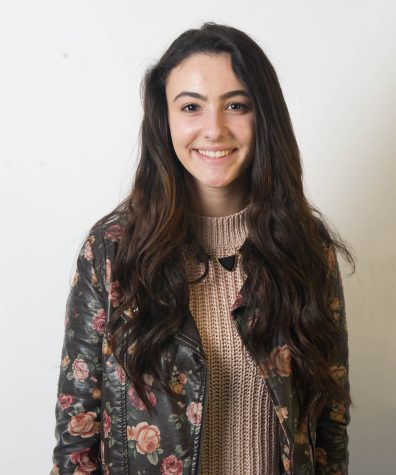She saw the sign
Sophomore Kennedy Trawick learns ASL off campus
The sound of one hand clapping any be a philosophical mystery to a Zen Buddhist, but the silent movement of hands often carries a literal world of meaning to practitioners of American Sign Language (ASL).
Sophomore Kennedy Trawick studies ASL as her language credit and is planning to become fluent.
“Last year when I was taking Spanish, I didn’t feel motivated in learning it so I tried to look for other languages to take,” Trawick said. “Even before high school I was really interested in learning sign language.”
Trawick was inspired to take ASL because of how “unique” the language was compared to the rest because it wasn’t oral.
“Sign language I feel isn’t as popular for a teenager in our area to know as opposed to Spanish or French,” Trawick said. “So the fact that you could take a language and communicate with people who may be deaf and don’t have someone to translate for them sounded useful to me.”
In addition to learning the language, Trawick believes she has learned a lot about the deaf culture and how important it is to efficiently communicate in society to “survive.”
“I think you learn a lot more in ASL as opposed to in a spoken class,” Trawick said. “It opens your eyes to a whole other community that lives with us and we may not even know it.”
Trawick wants to look into being an interpreter or keep it open as an option. She hopes it will help her be more “aware” about the deaf people around her.
“As an individual, someone who could speak sign language would be the only person that could communicate with someone deaf and actually help them,” Trawick said. “Sign language is much more useful than someone might think it would be.”
Trawick hopes to utilize her knowledge in ASL to be able to assist deaf people in everyday life and wants to take more courses after high school to become fluent.
“In certain situations, knowing sign language could save someone’s life,” Trawick said. “If they were to be injured and I was the only one that could communicate with them, then I would be the only person that could help them.”
Although she is very passionate about learning ASL, Trawick admits that taking the off campus class at Southern California Regional Occupational Center can be a “hassle.”
“Sign language is kind of like my sport this year.” Trawick said. “With all the after school practices and training you have to do to get better at your sport, sign language is almost as time consuming.”
Trawick’s “sacrifice” of pursuing the language she loves most has come at the price of her free time after school which limits her time to take extra curricular activities.
“I didn’t mind going to an off campus class that lasts longer during the week because of my passion for learning sign language,” Trawick said. “The ends justify the means in the sense that all the hustle to and from the location pay off eventually.”
In due part to her busy schedule, taking ASL has helped Trawick become more “time efficient” and credits her teacher to helping her become more organized as well.
“Because the campus is off class, not a lot of students take it so the teacher can be more helpful to you and more personal.” Trawick said
Trawick describes the class as more “tight knit” since it consists of only two dozen kids from various schools in the south bay, one of which is Julian Tastor who attends Mira Costa.
“Taking a class with people from different schools allows you to get to know more people and widens your perspective on the different cultures, including the deaf culture, around you,” Tastor said.
Tastor has been able to communicate with the deaf kids at his school and is “grateful” he has learned ASL because of the friends he has made outside and in the classroom.
“I didn’t show a lot of interest in learning ASL at first,” Tastor said. “Yet as I started to retain more ASL symbols, I started to be able to talk to the deaf kids at my school.”
Tastor believes learning ASL can help unite kids from different social groups, despite their disabilities, and create a more welcoming environment for them.
“There are many kids at schools that don’t have many friends because of that language barrier,” Trawick said. “So sign language could allow me to reach out to someone that no one else could.”
Talking to people who are hard of hearing has taught Tastor and Trawick to be more “welcoming and considerate” to a whole new community of people.
“I’ve had actual conversations with deaf people who have a language barrier that isolates them from their peers,” Tastor said. “It has taught me to be more open to people who have this condition that hold them back.”
Although Trawick hasn’t had the opportunity to use sign language as a tool outside of class, she hopes that someday she could be of service to the deaf people around her.
“All around, the class makes you more cultured than if you were to take a spoken class,” Trawick said. “We learn about what they have to deal with and the problems they have faced and still face today without being able to communicate with others, which is why I chose to take ASL, to reach out to a whole new spectrum of people who sometimes can’t on their own.”

Aiwreckuh
Live fast die yung (almost 16 years, going strong)
Stay classy not sassy. Rawr XD
04.12.01 with my main homie (me)


